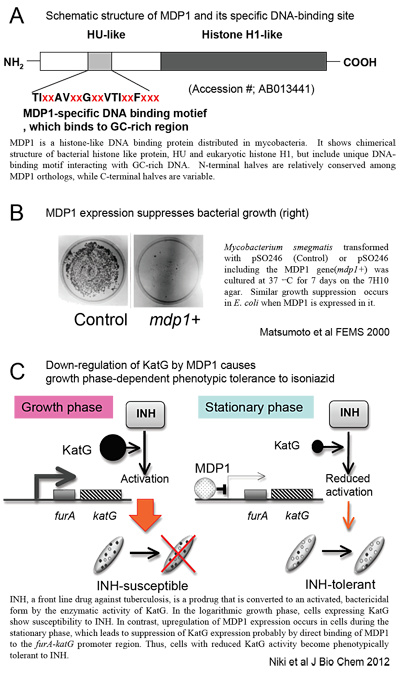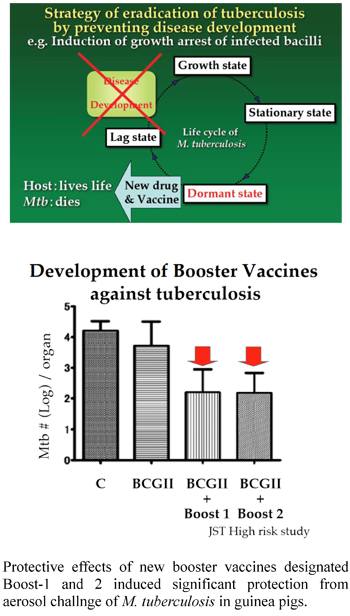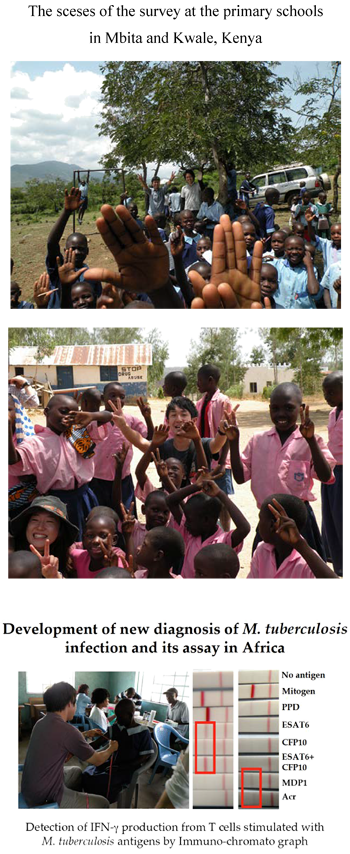Bacteriology
HOME > Activities > Basic Medicine > Bacteriology
1.Research Summary
Our main research is focused on fights against tuberculosis (TB) and related mycobacterial diseases.
2.Research Subjects
- Basic research to clarify the molecular mechanisms of virulence of Mycobacterium.
- Both basic and translational research for development of diagnosis, drugs, and vaccines to control TB and related mycobacterial diseases.
- Conduct surveys in TB-endemic area, such as Africa and Asia, and contribute to global cooperation.
3.Research Results
|
[Area] Bacteriology |
|
|
[Research subject] Analysis of the function of the mycobacterial protein and drug development |
|
|
[Description] |
[Photographs]
|
|
Publications |
|
|
[Area] Bacteriology |
|
|
[Research subject] Development of the prophylactic interventions against intractable diseases |
|
|
[Description] |
[Photographs]
|
|
Publications |
|
|
[Area] Bacteriology |
|
|
[Research subject] Comprehensive health survey in the TB-endemic area |
|
|
[Description] |
[Photographs]
|
Please see the Bacteriology website for a detailed description of our research.



